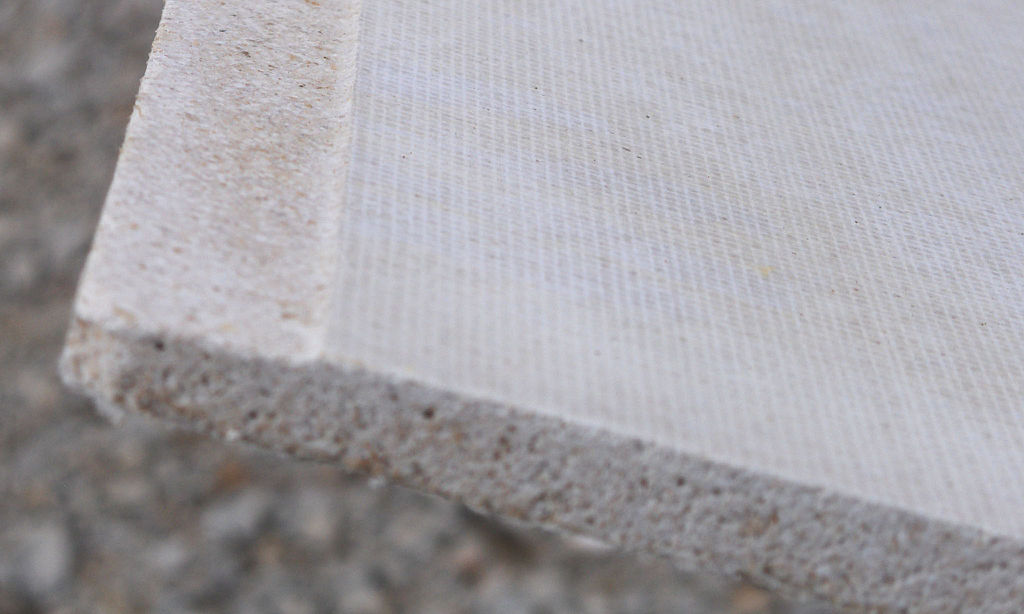The Gypsum Association released updates to both GA-221 Repair of Joint Ridging and GA-222 Repairing Screw or Nail Pops standards publications. Each set of recommendations clarifies best practices associated with common wallboard repairs.
Joint ridging, or beading, is a uniform, fine linear deformation that occurs at the joints of finished and decorated gypsum panel products. Compression at the edges or ends of the panels due to extreme fluctuations of temperature and humidity is the most common cause of ridging; however, misaligned framing can also contribute to the problem. The Gypsum Association recommends waiting until a new structure has experienced at least one complete heating/cooling cycle before making repairs.
Fastener popping occurs most commonly from lumber shrinkage due to initially high moisture content in newly constructed wood framing. Overly long fastener length contributes to the problem. While fastener popping that appears before or during finishing and decoration should be repaired immediately; popping that occurs a month or more into the heating season should wait for repair until the season’s end.
In the case of fastener popping, the secure reattachment of the gypsum panel product to the framing is essential. All new screws or nails should be of the proper length. Key to the repair methods outlined in both GA-221-14 and GA-222-14 is careful sanding and treatment with joint compound as well as observing recommended drying times prior to redecoration.
Related Stories
Legislation | Aug 5, 2022
D.C. City Council moves to require net-zero construction by 2026
The Washington, D.C. City Council unanimously passed legislation that would require all new buildings and substantial renovations in D.C. to be net-zero construction by 2026.
| Aug 4, 2022
Newer materials for green, resilient building complicate insurance underwriting
Insurers can’t look to years of testing on emerging technology to assess risk.
Codes and Standards | Aug 3, 2022
Some climate models underestimate risk of future floods
Commonly used climate models may be significantly underestimating the risk of floods this century, according to a new study by Yale researchers.
Codes and Standards | Aug 2, 2022
New tools help LEED projects reach health goals
The U.S. Green Building Council now offers tools to support the LEED Integrative Process for Health Promotion (IPHP) pilot credit.
Codes and Standards | Jul 29, 2022
Few projects and properties are being built beyond code
Clients and architects disagree on how well building to code provides resilience, according to a recent report by the American Institute of Architects (AIA) in partnership with Owens Corning.
Multifamily Housing | Jul 28, 2022
GM working to make EV charging accessible to multifamily residents
General Motors, envisioning a future where electric vehicles will be commonplace, is working to boost charging infrastructure for those who live in multifamily residences.
Codes and Standards | Jul 27, 2022
Biden administration proposes drastic flood insurance reform
The Biden administration’s proposed major overhaul to the National Flood Insurance Program, or NFIP, would drastically alter how Americans protect homes and businesses against flooding.
Codes and Standards | Jul 22, 2022
Office developers aim for zero carbon without offsets
As companies reassess their office needs in the wake of the pandemic, a new arms race to deliver net zero carbon space without the need for offsets is taking place in London, according to a recent Bloomberg report.
Codes and Standards | Jul 22, 2022
Hurricane-resistant construction may be greatly undervalued
New research led by an MIT graduate student at the school’s Concrete Sustainability Hub suggests that the value of buildings constructed to resist wind damage in hurricanes may be significantly underestimated.
Building Team | Jul 20, 2022
San Francisco overtakes Tokyo as the world’s most expensive city for construction
San Francisco has overtaken Tokyo as the world’s most expensive city for construction, according to a new report from Turner & Townsend.

















